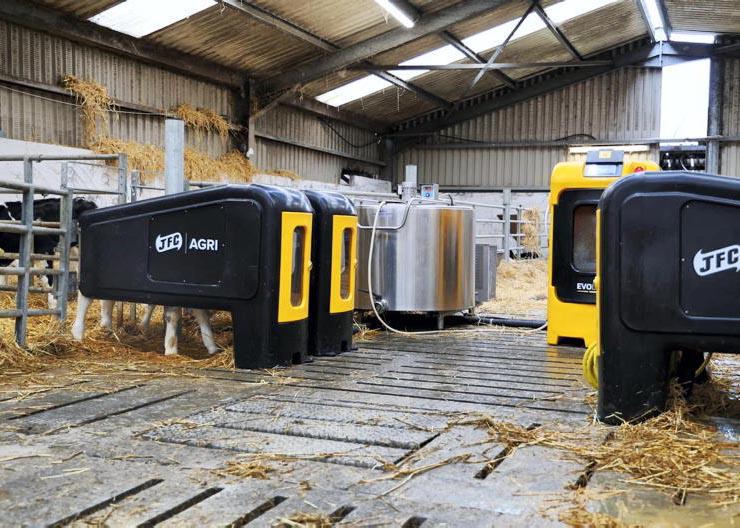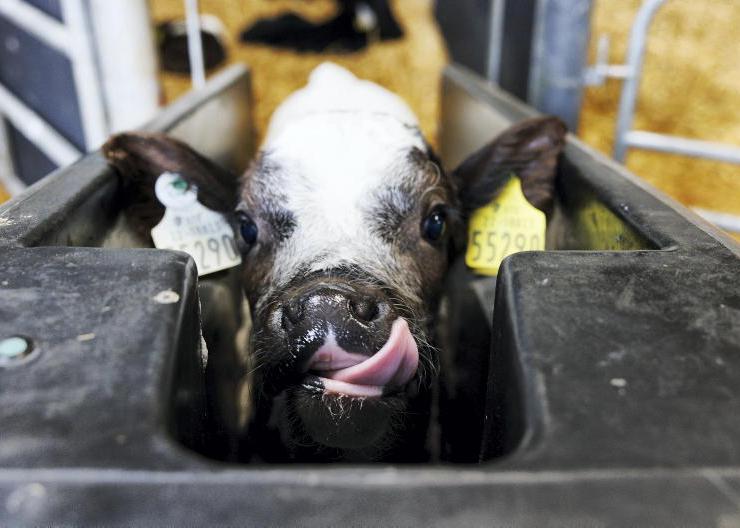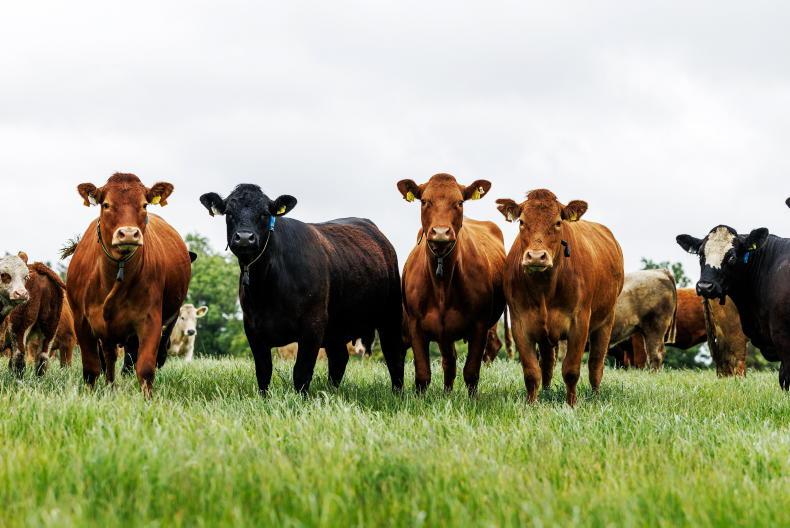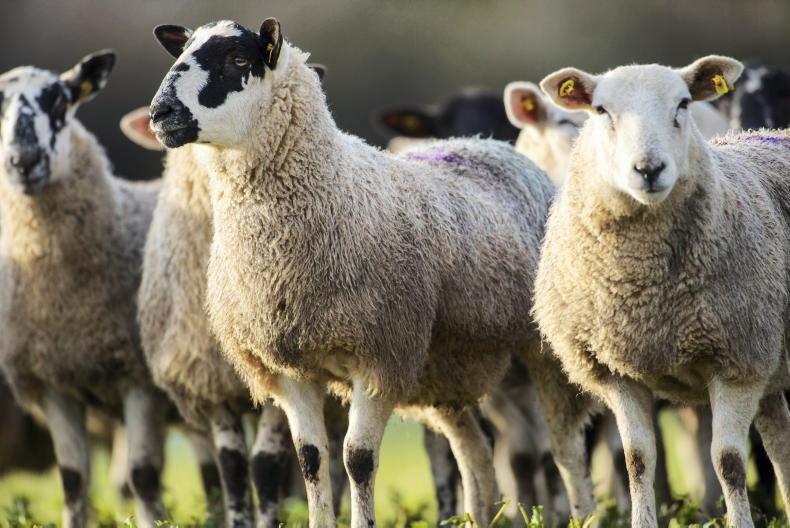Performance recording of sheep is lagging behind that of beef suckler cows and is significantly behind that of dairy recording. But there are now a number of apps and programs that farmers can use to make better choices regarding culling underperforming ewes and selecting suitable replacements
Tullamore Farm has been recording data for Sheep Ireland for the past few years. Recording begins at breeding time, with notes being made on which ewes are joined to which rams. Scanning rate is then recorded, with the litter size of each ewe noted, as well as any barren ewes.
Where the largest volume of data is being recorded is at lambing time. Farm manager Shaun Diver records lamb weight within the first 24 hours.
He also scores lambs on their vigour, with a ranking of one to five. Ewes are also analysed at the point of lambing, with scoring again in place for milking and mothering ability.
For the time given to recording the data, Shaun is getting a wealth of information back
Lambing difficulty is also scored and recorded at this point, with a ranking of one to four. The lambs are then tagged and assigned to their mother and sire, to allow for the lamb performance to be linked back to the parents.
Lambs are weight recorded a total of five times – at birth, at 40 days, at 100 days, at 150 days weight and at maturity. The aged weights of 40, 100 and 150 days have a 45-50-day window to allow for a group of lambs to be weighed together. During these weighings, Shaun will also record any lameness, body condition score (BCS) and dag score for both ewes and lambs, with ewe mastitis also recorded.
How does this reduce labour?
All of the above seems to add rather than reduce labour on-farm. Shaun would say that the recording and tagging at lambing takes no more than five minutes. For the time given to recording the data, he is getting a wealth of information back.
Regarding flock sires, he sees which rams are performing best on the flock from a terminal point of view. Increased weight gain is resulting in reduced days to slaughter, with less concentrates and inputs going into lambs.
The lamb vigour and lambing difficulty scoring also allows him to use rams that produce consistently vigorous lambs with few lambing problems.
Regarding ewe performance, Shaun has the data recorded on the milking and mothering ability of ewes, as well as the weight gain of the lambs, to single out and cull underperforming ewes that are causing extra labour at lambing through mismothering or lambs having to be bottle fed, or those that are producing poor-quality lambs.
Recording lamb and ewe lameness and dag score throughout the summer also allows for problem ewes to be culled.
As we moved to keeping more homebred replacements on Tullamore Farm, Shaun had historically chosen the heaviest ewe lambs to retain.
Now, with several years of data collected, he will be able to use ewe and ram performance as an aid in choosing suitable ewe lambs that are coming from milky, fertile dams and sires, along with the lamb liveweight.
Recording all this data will hopefully lead to:
Less lambing assistance required.Ewes with good mothering and milking ability used to breed replacements.Reduced cases of lameness and blowfly strike through cleaner lambs.Better weight gains resulting in reduced days to slaughter.
Performance recording of sheep is lagging behind that of beef suckler cows and is significantly behind that of dairy recording. But there are now a number of apps and programs that farmers can use to make better choices regarding culling underperforming ewes and selecting suitable replacements
Tullamore Farm has been recording data for Sheep Ireland for the past few years. Recording begins at breeding time, with notes being made on which ewes are joined to which rams. Scanning rate is then recorded, with the litter size of each ewe noted, as well as any barren ewes.
Where the largest volume of data is being recorded is at lambing time. Farm manager Shaun Diver records lamb weight within the first 24 hours.
He also scores lambs on their vigour, with a ranking of one to five. Ewes are also analysed at the point of lambing, with scoring again in place for milking and mothering ability.
For the time given to recording the data, Shaun is getting a wealth of information back
Lambing difficulty is also scored and recorded at this point, with a ranking of one to four. The lambs are then tagged and assigned to their mother and sire, to allow for the lamb performance to be linked back to the parents.
Lambs are weight recorded a total of five times – at birth, at 40 days, at 100 days, at 150 days weight and at maturity. The aged weights of 40, 100 and 150 days have a 45-50-day window to allow for a group of lambs to be weighed together. During these weighings, Shaun will also record any lameness, body condition score (BCS) and dag score for both ewes and lambs, with ewe mastitis also recorded.
How does this reduce labour?
All of the above seems to add rather than reduce labour on-farm. Shaun would say that the recording and tagging at lambing takes no more than five minutes. For the time given to recording the data, he is getting a wealth of information back.
Regarding flock sires, he sees which rams are performing best on the flock from a terminal point of view. Increased weight gain is resulting in reduced days to slaughter, with less concentrates and inputs going into lambs.
The lamb vigour and lambing difficulty scoring also allows him to use rams that produce consistently vigorous lambs with few lambing problems.
Regarding ewe performance, Shaun has the data recorded on the milking and mothering ability of ewes, as well as the weight gain of the lambs, to single out and cull underperforming ewes that are causing extra labour at lambing through mismothering or lambs having to be bottle fed, or those that are producing poor-quality lambs.
Recording lamb and ewe lameness and dag score throughout the summer also allows for problem ewes to be culled.
As we moved to keeping more homebred replacements on Tullamore Farm, Shaun had historically chosen the heaviest ewe lambs to retain.
Now, with several years of data collected, he will be able to use ewe and ram performance as an aid in choosing suitable ewe lambs that are coming from milky, fertile dams and sires, along with the lamb liveweight.
Recording all this data will hopefully lead to:
Less lambing assistance required.Ewes with good mothering and milking ability used to breed replacements.Reduced cases of lameness and blowfly strike through cleaner lambs.Better weight gains resulting in reduced days to slaughter. 









SHARING OPTIONS